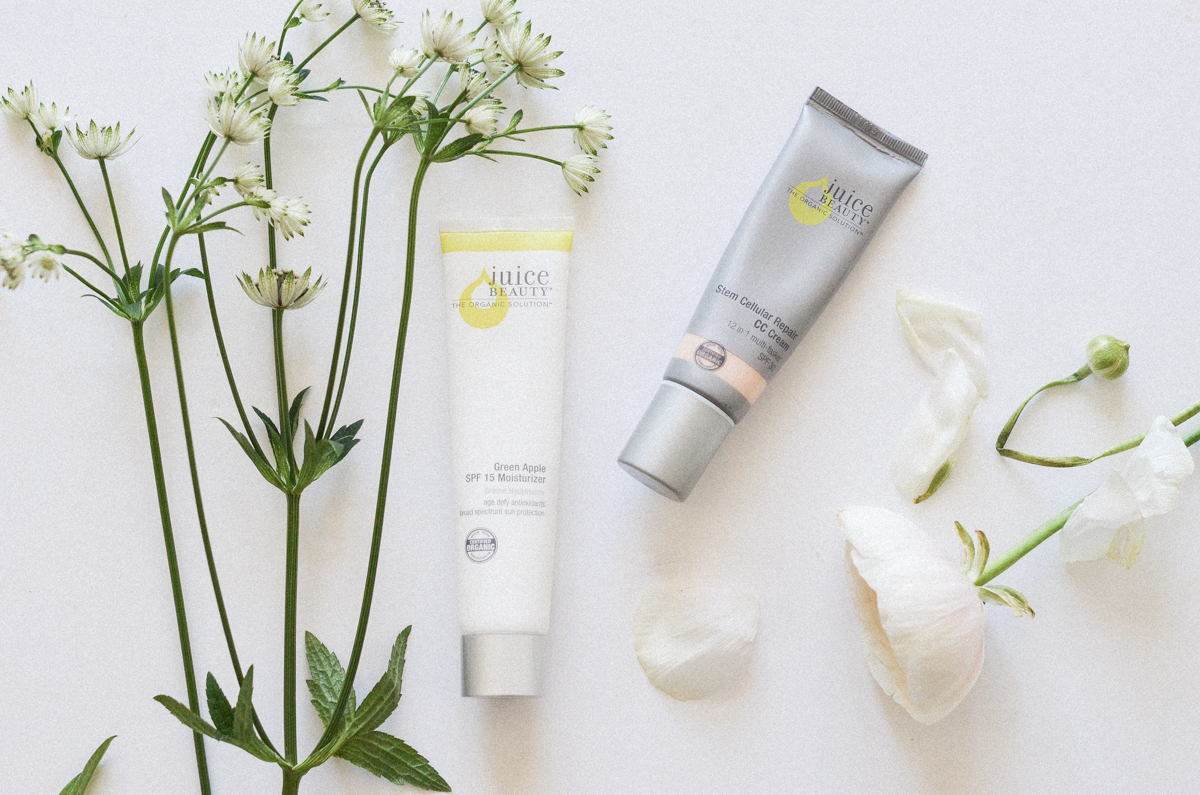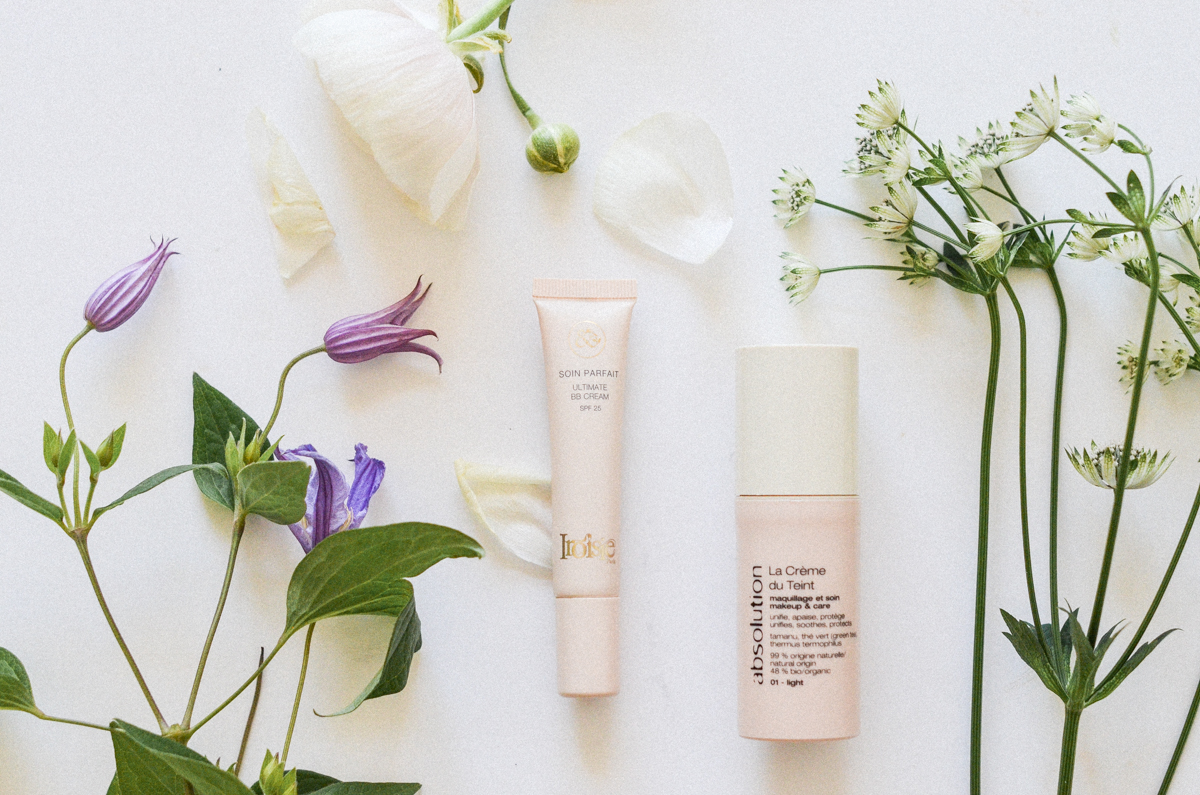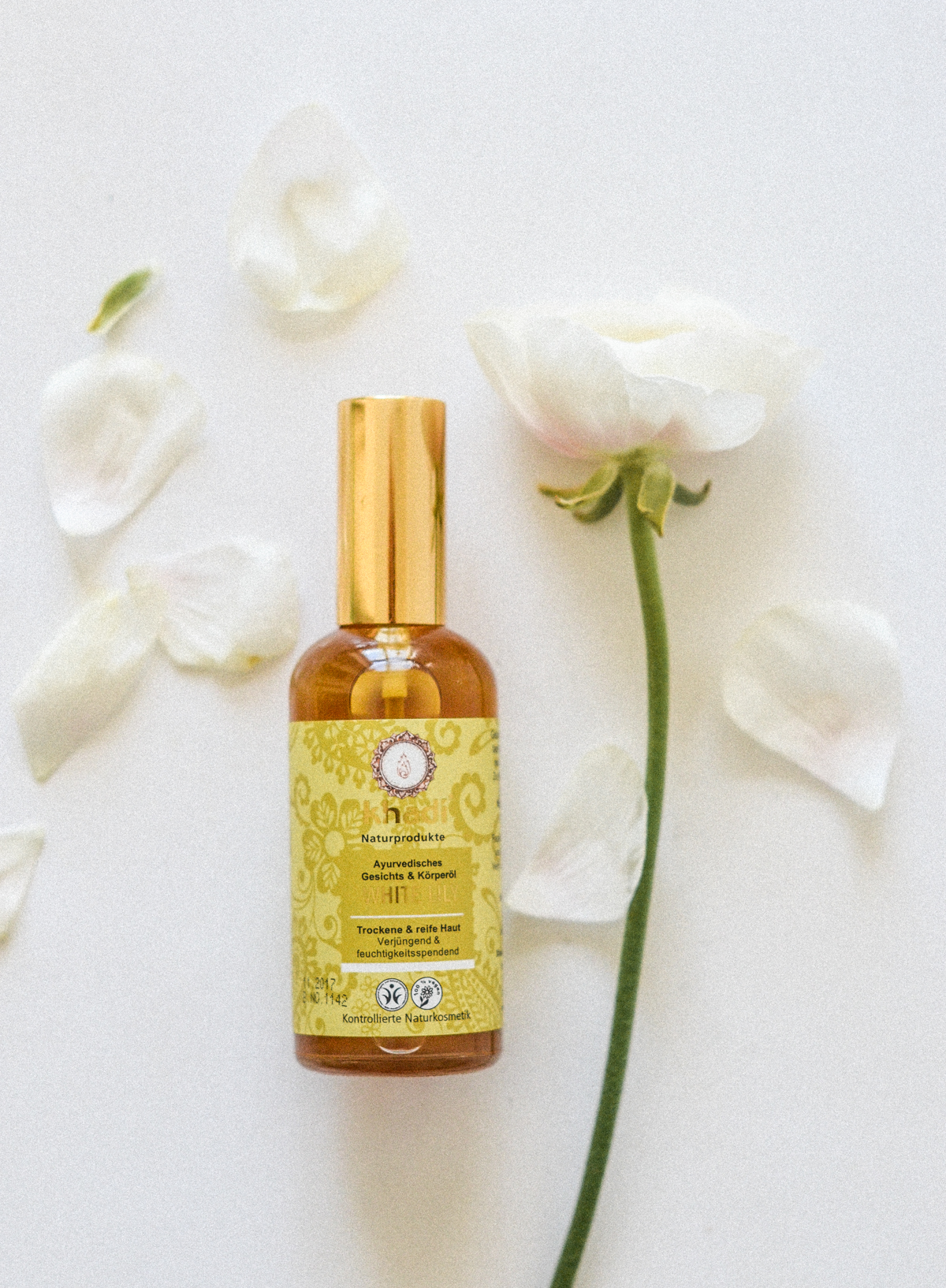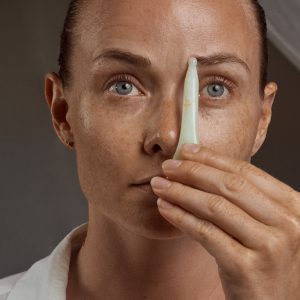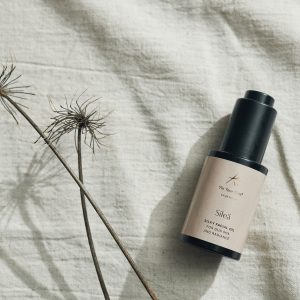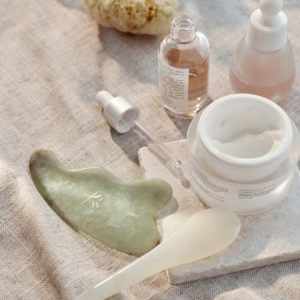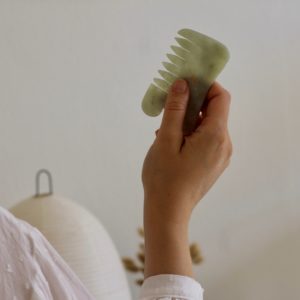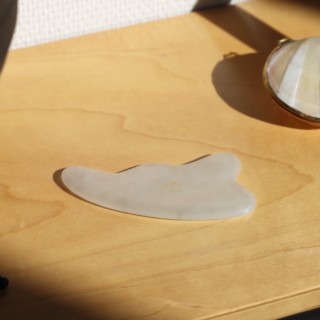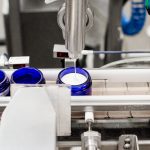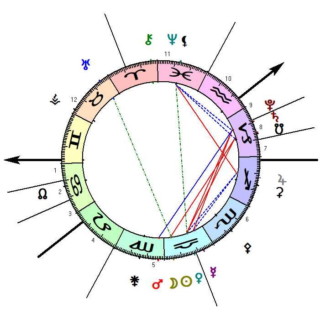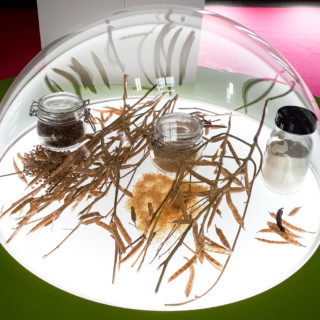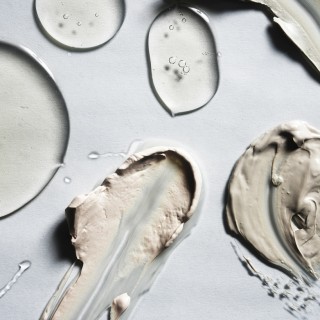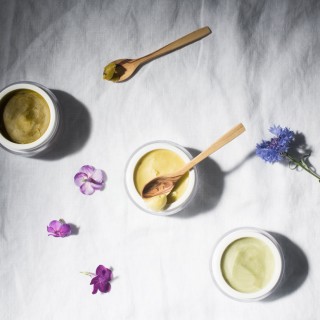This is the season when skin pigmentation is the hot topic. If your skin is prone to hyperpigmentation it is a good idea to start protecting your skin from sun damage early in the spring to steer clear of hyperpigmentation like melasma and lentigo.
The difference between these two is that melasma appears in quite big patches, often around the lips, forehead and the cheek bones. Melasma is linked to hormonal balance and is seen more in women using hormonal contraceptives. Lentigos are blotchy hyperpigmentation spots usually found in mature skin in areas of constant sun exposure as on the back of the hands and the decollete area.
The best protection agains hyperpigmentation is a sun screen which is definitely best used as a natural cosmetics product where the sun screen is physical. In natural cosmetics there are a few day creams and several foundations containing a sun screen. Choose the one that best suits your fancy. Some plant oils give a light SPF and you can choose a cream like this to use under your make up. For example the yangu and manketti oils used in Esse moisturisers give the skin a SPF 6 which is fine if you do not spend excessive time in direct sun exposure.
Day creams with an SPF:
Juice Beauty Green Apple SPF 15 Moisturizer: A day cream with SPF 15 for 30+ skins. It decreases signs of ageing and hyperpigmentation with antioxidants and mild fruit acids from fruit juices.
Juice Beauty SPF 30 Oil Free Moisturizer: An oil free moisturiser for oily skins with a high SPF. Vitamin C and cucumber extract are great raw ingredients in controlling hyperpigmentation.
Great foundations with an SPF:
Iroisie Soin Parfait BB Cream: With an SPF 25 this BB cream smoothens and corrects skin tone naturally.
Juice Beauty Stem Cellular CC Cream: A CC cream with SPF 30, it gives a naturally radiant finish covering up light discoloration. Vitamin C and natural fruit acids from apple and white grape juices prevent and treat hyperpigmentation.
Foundations and moisturisers with a light natural SPF:
Esse Light Moisturizer: All Esse moisturisers (Light, Deep, Rich ja Ultra) contain yanggu and manketti oils giving a light and natural sun protection which is good for light sun exposure. Light Moisturiser is perfect for oily and combination skins.
Esse Deep Moisturiser: The perfect moisturiser for normal and combination skins and for dehydrated skin. Well suited for dry-oily skins as well because it doesn´t contain comedogenic ingredients.
Absolution La Créme du Teint: A nourishing light foundation that brings a beautiful glow to the skin. Contains a light SPF.
Can hyperpigmentation be treated if you already have visible changes in pigmentation?
The answer is yes, but you should be careful in choosing the products and not believe everything the side of the packaging says. Treating hyperpigmentation is a challenge and naturally, the darker the spots are the harder it is to make them vanish completely. Lightening is possible though and especially preventing new pigmentation from occurring can be controlled with the right products.
Your whole skin care regimen should be under scrutiny when treating hyperpigmentation. Using only lightening creams will not bring an optimal result, taking a careful look at your skin care regimen as a whole is the key here.You can find a great 10 step skin care program in my Aidosti Kaunis book which gives a good base in designing a skin care routine for you.
As the corner stones are lightening products that control melanin production. They affect either tyrosinase enzyme activity which is the main contributor in melanin production or by breaking melanin. Ingredients used to affect tyrosinase enzyme activity may not be able to lighten already formed pigmentation. Ingredients used to break melanin on the other hand can lighten already formed pigmentation. The results can most often be seen in 8 to 16 weeks of beginning the treatment.
Aside of melanin production decreasing ingredients the regimen will contain an AHA peel. Glycolic acid or products containing it are the most beneficial in treating hyperpigmentation. Ingredients with ample antioxidants are a key factor as well, they play a part in reducing hyperpigmentation and inflamation and neutralising free radicals.
The process where melanin, pigment is formed is called melanogenesis. Hyperpigmentation can be treated with raw ingredients which restrict melanin filled melanosomes from transferring on to kerationocytes, this prevents melanogenesis, sun tan forming on the surface of the skin.
A few effective ingredients in treating hyperpigmentation:
Arbutin: Arbutin is mainly found in Bearberry (Arctostaphylos uva-ursi), but it is found in smaller amounts in cranberry and blueberry as well. It has been proved to reduce tyrosinase activity. Arbutin is a potential antioxidant and is one of the most commonly used ingredients in treating hyperpigmentation.
Amla: Amla (Emblica Officinalis) is an medicinal plant used especially in Ayurveda. It contains plenty of vitamin C and antioxidants. Amla protects from free radicals and reduces the function of tyrosinase enzyme. Amla protects the skin from UV damage and premature ageing. It also protects and fortifies collagen.
Vitamin C: Vitamin C (Magnesium Ascorbyl Phosphate) is one of the most effective raw ingredients in treating hyperpigmentation. It has a lightening, melanin production reducing, and antioxidizing effect. It is a challenge to absorb the water soluble vitamin C into the skin, which is why it is best combined with other melanin reducing and lightening ingredients. Vitamin C also helps in repairing sun damaged skin. An oil soluble vitamin C Ascorbyl Palmitate is also used in cosmetics.
Hydroquinone: The use of the synthetically produced hydroquinone is restricted in the EU and United States. Hydroquinone is found naturally in some plants like onions, cranberry, blueberry and pear. All of the above are good choices for hydroquinone.
Cucumber: Cucumber contain lots of antioxidants and vitamin C. It has potentially an lightening and reducing effect on melanin production, but it is most potent when combined with other ingredients treating hyperpigmentation. Cucumber has a soothing effect on inflammation and it is a great ingredient in treating puffy eyes because it prevents tying moisture into the skin.
Liquorice root: Liquorice root effects tyrosinase enzyme function and breaks melanin. It is a great source of antioxidants, calms the skin and protects form UV damage. Liquorice root is used in Ayurveda as a medicinal herb and it is an effective raw ingredient in treating many skin disorders such as rosacea and acne.
Lily: The Madonna Lily prevents melanosomes from transferring to keratinocytes, cools and calms and gives an UV shield to skin. It reduces premature ageing of the skin and acts as an antioxidant.
Mulberry: Mulberry is a powerful antioxidant, it soothes inflammation and reduces tyrosinase enzyme function. It has been proven to be even more effective than arbutin in treating hyperpigmentation but for now is quite hard to find in skin care products.
Narcissus: From the narcissus family the Sea Daffodil restricts melanosome transfer to kerationcytes and helps maintain skin moisture.
Niacinamide: Niacinamide goes by the name niacin, nicotineaminide and vitamin B3. It can be found in many root vegetables, mushrooms, yeasts, some fruit, peanuts and seeds. In cosmetics it is used in a synthetically produced form. Vitamin B3 has an atioxidizing effect, it prevents inflammation, protects the skin form UV damage and restricts melanin filled melanosomes from transferring into keratinocytes, in other words, it restricts melanogenesis, the forming of sun tan.
Soy: Soy extract (not soy oil) has a vitamin B like effect on melanosome transfer. It is a great source of antioxidants, calms inflammation and protects the skin from UV damage and moisturises the skin. Soy extract has been proven in lightening hyperpigmentation. Combined with salicylic acid it is beneficial in treating acne scars.
Best products for treating hyprpigmentation:
Suki Targeted Bio-Brightening Serum: Arbutin, vitamin C, matsutake mushroom and liquorice root are an effective combination in treating and preventing hyperpigmentation.
Suki Even-Tone Brightening Serum: The purse friendlier version of treating hyperpigmentation contains the same ingredients as the Suki Targeted Bio-Brightening serum, only in a bit milder version.
Tata Harper Supernatural Concentrated Brightening Serum: A super serum for treating and preventing hyperpigmentation. The serum has several effects both on the skin surface and in the deeper layers of the skin: it decreases melanin production and restricts melanosomes from transferring into keratinocytes. It increases skins moisture content and repairs free radical damage maintaining the glow and radiance of healthy skin.
Khadi White Lily Face & Body Oil: This is a very effective and long lasting skin oil for the face and body. It contains liquorice root, amla and white lily. Due to it´s ingredients this is the best and most effective oil that I have found in treating hyperpigmentation.
Juice Beauty Green Apple Peel Nightly Brightening Pads: These brightening bamboo pads are used to wipe the skin after cleansing. The brightening and lightening ingredients have been soaked into the pads. The ingredients are super effective in treating hyperpigmentation: vitamin B3, cucumber, liquorice root, arbutin and fruit acids.
Juice Beauty Green Apple Peel Sensitive and Full Stregth -two strengths for different skin types: The effective AHA acid peels designed especially for hyperpigmentation. Sensitive is good for normal, slightly thinner skins (not suitable for highly sensitive skins) and the stronger Full Strength is good for normal to oily and thicker skins.
Read more about treating the pigmentation from my Genuine Beauty Guide.
Resource: Leslie Bauman, M.D: Cosmeceuticals and cosmetic ingredients
Photos Katja Kokko
Translated by Mariko Pajalahti

